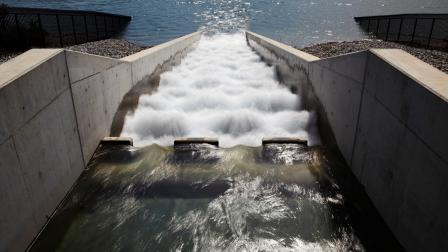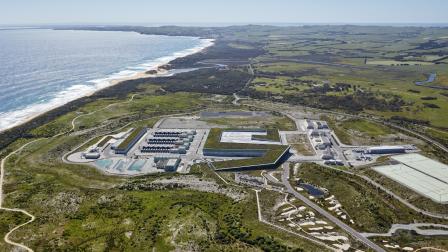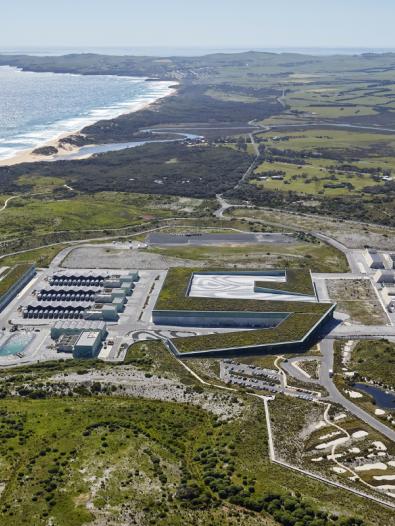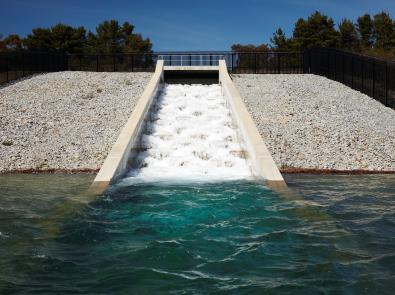Melbourne’s water supply comes primarily from dams and reservoirs and water from the Victorian Desalination Plant which now provides an essential role in our city’s water supply.
Why we need a desalination plant
Warmer temperatures and growing demand are putting increased pressure on Melbourne’s water storages. By 2030, nearly 6 million Melburnians will need water every day.
Although Melbourne's water supply system is resilient and our water storages are secure, we know they can drop quickly. That’s why at Melbourne Water, we have been taking action and planning across 50-year time horizons to manage and protect this precious resource for our city.
The Victorian Desalination Plant - which removes salt from seawater - was announced as a project during the Millennium Drought when water storage levels were critically low (16.5% in our largest reservoir). It can deliver up to 150 billion litres of high-quality drinking water a year. That’s around one-third of Melbourne’s annual water needs – or around 60,000 Olympic swimming pools
Using rainfall-independent sources like desalinated water early and often takes pressure of our reservoirs during dry periods and keeps our water storages healthy.
While the desalination plant provides an essential buffer to top up our reservoirs, we must keep looking to other resources to supply more, ensuring we have enough water today, tomorrow and for generations to come.
The Department of Energy, Environment and Climate Action manages the contract with the plant’s operator, AquaSure.
Take a look at the important role the desalination plant plays:
Annual desalinated water order
Each year the government decides how much water is needed from the desalination plant to support Victorians for the year ahead. On 4 April 2025, the Minister for Water announced that a desalinated water order of 50 gigalitres would be placed for 2025-26.
This decision was underpinned by carefully considering:
- current water storage conditions
- projected water demands
- possible future climate conditions
- the balance between managing security of supply and minimising customer impacts.
The Victorian Desalination Plant can provide up to one-third of Melbourne’s annual water demand, underpinning supply not just for Melbourne but also surrounding areas including Geelong and parts of Gippsland.
To date, the Victorian Desalination Plant has produced 455 gigalitres of water.
Get the latest water storage data for Melbourne and Geelong here: Water Storage Levels
How desalination works
The desalination plant removes dissolved salts from seawater, using a reverse osmosis process.
This produces high-quality drinking water that meets our strict quality requirements (like all our water), including standards set by the:
- Australian Drinking Water Guidelines
- Victorian Safe Drinking Water Act
- World Health Organization.
Before entering Melbourne’s water supply system:
- Water quality is first tested at the desalination plant in Wonthaggi, and again at all delivery points.
- Desalinated water travels towards Melbourne through an 84-kilometre two-way pipeline – with pipeline offtakes enabling South Gippsland and Western Port to receive water from the plant, and from Melbourne, if needed.
- Desalinated water enters our supply network at Berwick and flows on to Cardinia Reservoir, where it mixes with water from our catchments.
- Water can then be transferred to Silvan Reservoir and on to most of Melbourne.
The plant’s power requirements are 100% offset by renewable energy.
Watch this video for more information:
You may also like...
Desalination data
View daily desalinated water data, to see how much is contributed to our water storage levels when the desalination plant is in use.

How we’re taking action
Melbourne’s water corporations are working hard with government and a range of other partners to secure our water supply.


